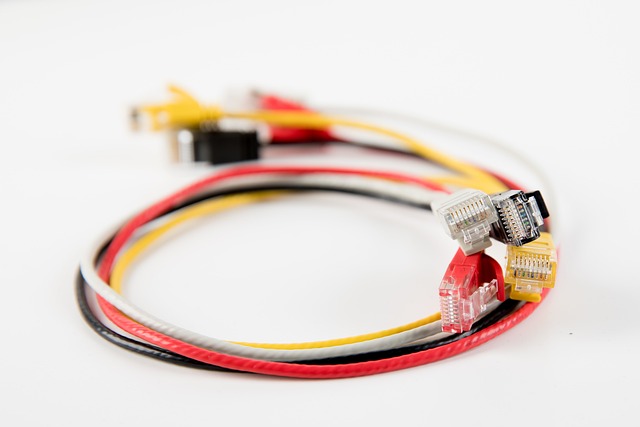MEP 3D modeling revolutionizes space design through strategic lighting placement. By simulating natural light integration and optimizing artificial lighting, designers create aesthetically pleasing, energy-efficient environments. Advanced software predicts illumination levels, enabling early issue detection and informed fixture placement decisions for both functionality and aesthetics. This technology is crucial for modern architecture, enhancing interior spaces while adopting sustainable building practices.
Lighting fixture placement is a key aspect of creating well-lit, functional spaces. This article explores the art and science of optimal illumination through strategic MEP 3D modeling. We delve into lighting design fundamentals and their impact on room ambiance and functionality. By simulating natural light integration and maximizing artificial illumination efficiency with strategic fixture placement, we can revolutionize space utilization. Discover how these techniques enhance visual comfort and overall user experience in both residential and commercial settings.
Understanding Lighting Design Fundamentals in MEP 3D Modeling
In the realm of MEP (Mechanical, Electrical, Plumbing) 3D modeling, understanding lighting design fundamentals is pivotal for achieving optimal illumination in built environments. This involves carefully considering factors such as light source type, direction, intensity, and distribution to create balanced and aesthetically pleasing spaces. By integrating these principles into the modeling process, designers can ensure that artificial lighting complements natural light, reduces energy consumption, and enhances user experience.
MEP 3D modeling software provides tools to simulate various lighting scenarios, allowing professionals to predict and optimize illumination levels before construction begins. This simulation capability is crucial for identifying potential issues, such as excessive glare or shadowing, early in the design phase. Through precise modeling, designers can make informed adjustments, ensuring that the final space not only meets but exceeds expectations for lighting quality and efficiency.
Impact of Placement on Room Ambiance and Functionality
The strategic placement of lighting fixtures plays a pivotal role in shaping the ambiance and functionality of any space, making it an essential aspect of MEP (Mechanical, Electrical, and Plumbing) 3D modeling. Positioning lights correctly can transform a room’s atmosphere, enhancing its overall aesthetics and practicality. For instance, well-placed task lighting near work areas ensures optimal visibility while reducing eye strain, fostering productivity. In contrast, ambient lighting strategically scattered across the ceiling contributes to a warm and inviting ambiance, creating a sense of coziness or elegance depending on the design intent.
Moreover, the placement of fixtures influences how light interacts with various surfaces, such as walls, furniture, and décor. Careful consideration can highlight architectural features, create focal points, or subtly blend elements together. MEP 3D modeling software allows designers to simulate these lighting scenarios virtually, enabling them to make informed decisions about fixture placement before construction begins. This process results in spaces that are not only visually appealing but also functional, catering to both practical needs and aesthetic preferences.
Simulating Natural Light Integration for Enhanced Spaces
In today’s digital era, simulating natural light integration through advanced MEP (Mechanical, Electrical, and Plumbing) 3D modeling is revolutionizing space design. By accurately mimicking sunlight patterns and reflecting ambient light, this technology enhances visual comfort and reduces artificial lighting needs. This approach ensures that spaces feel more open, connected to the outdoors, and aesthetically pleasing.
MEP 3D modeling enables designers to virtually “dive into” a space, simulating how natural light interacts with different surfaces and fixtures at various times of the day or year. This allows for strategic placement of lighting fixtures to optimize illumination without compromising energy efficiency. The result is a harmonious blend of artificial and natural light, creating vibrant, bustling spaces that are both functional and visually captivating.
Maximizing Artificial Illumination Efficiency with Strategic Fixtures
In modern architectural design, strategic placement of lighting fixtures is a key aspect of enhancing interior spaces through effective artificial illumination. By leveraging MEP (Mechanical, Electrical, Plumbing) 3D modeling, designers can predict and optimize light distribution, ensuring every area receives the desired level of brightness and minimizing energy wastage. This precision approach allows for efficient use of lighting resources, contributing to both cost savings and environmental sustainability.
Strategic fixture placement involves considering factors like room dimensions, furniture arrangements, and natural light ingress. 3D simulation tools enable designers to virtually manipulate fixture locations, angles, and types to achieve uniform illumination without creating harsh shadows or bright spots. This meticulous planning ensures optimal visual comfort and enhances the overall aesthetic appeal of a space, making it a vital component in modern building design practices.
Incorporating strategic lighting fixture placement and simulation in MEP 3D modeling is key to achieving optimal illumination, enhancing room ambiance, and maximizing functionality. By understanding fundamental lighting design principles, designers can create vibrant spaces that seamlessly blend natural and artificial light. Through precise positioning and advanced simulations, the right balance of illumination is attained, ensuring comfortable environments that cater to various activities. This approach not only improves aesthetics but also contributes to energy efficiency, making it a vital consideration in modern building design.
